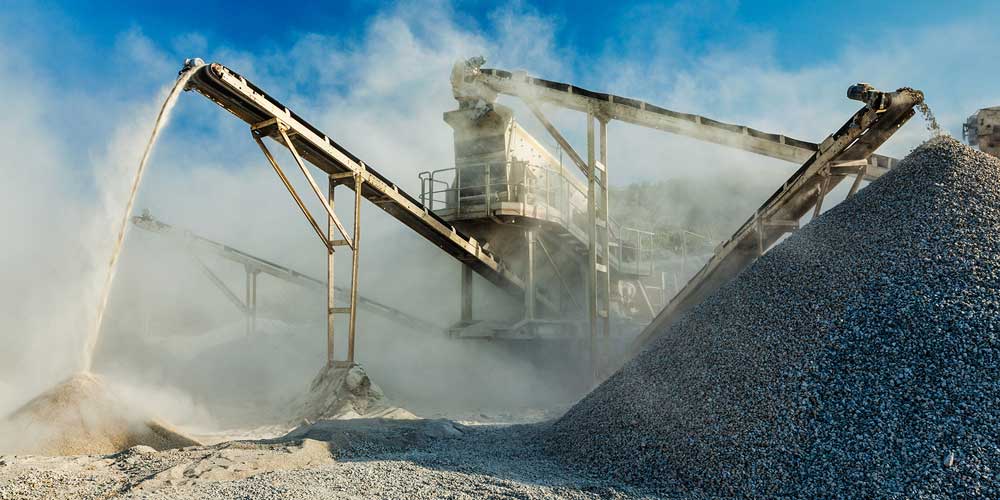PM10 - Particulate Matter

Rock crushers often spray water to control PM emissions.
Particulate matter (PM) is a complex mixture of extremely small particles and liquid droplets. PM is made up of a number of components, including acids such as nitrates and sulfates, organic chemicals, metals, soil, and dust. Sources of particulate matter include construction sites, gravel/dirt roads, smokestacks, and fires. Many particles form in the atmosphere via chemical reactions of other pollutants like sulfur dioxide and nitrogen oxides, which are emitted from combustion sources like power plants and automobiles.
Particle size is directly linked to health risk. The National Ambient Air Quality Standards (NAAQS) address particles that are 10 micrometers (μm) in diameter (PM10) or smaller because those particles pass through the throat and nose and can enter the lungs. The particles promote inflammation, induce coagulation, and oxidative stress. Long-term exposure contributes to more heart attacks and increased mortality rates. Different fire conditions produce different PM emissions, including toxic chemicals and volatile organic compounds (VOCs). Particles larger than 10 μm settle quickly and affect their immediate surroundings, while air currents transport smaller particles long distances, sometimes hundreds of miles.
Exposure to particulate matter can damage lung and heart function by irritating the airways and causing irregular heartbeats. PM settling on the ground or water contributes to acid rain damage and soil nutrient depletion. PM also reduces visibility (haze), which degrades scenic areas and can obscure transportation routes (e.g. wildfire smoke passing over a road).
There is one primary and secondary standard for PM10, and both standards have the same limit. Oklahoma is in attainment with both standards.
PM10 Monitoring Sites
The division monitors PM10 at six sites using a combination of continuous and filter-based samplers. One method takes continuous air samples and reports PM10 values every hour. Other samplers pull air for 24 hours across a filter medium and are then analyzed to produce a 24-hour value comparable to the standard. High values are usually the result of emissions from nearby sources exacerbated by dry windy conditions.
Data collected at the state's continuous PM10 sites may be accessed by clicking here. Data from the filter-based method are not available in real-time.
2017 PM10 Data
Primary and Secondary PM10 Standard = 150 (μg/m³) (24-hour)
The NAAQS states the limit cannot be exceeded more than once per year over an average of 3 years. 2017 and the past two years (2015 and 2016) had no exceedances of 150 μg/m³.
2017 PM10 Values vs 24 Hour NAAQS
- Tulsa-Turner Park
- Tulsa-Peoria
- OKC-Downtown
- OKC-North
- Muskogee
- Weatherford
- Standard
- 30
- 33
- 39
- 43
- 80
- 130
- 150
- 0
Max 24 hr avg PM10 concentration (μg/m³)